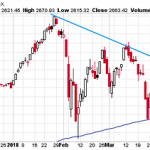The difference between success and failure in Forex trading is very likely to depend upon which currency pairs you choose to trade each week, and not on the exact trading methods you might use to determine trade entries and exits. Each week I am going to analyze fundamentals, sentiment and technical positions in order to determine which currency pairs are most likely to produce the easiest and most profitable trading opportunities over the next week. In some cases it will be trading the trend. In other cases it will be trading support and resistance levels during more ranging markets.
Big Picture November 4, 2018
In my previous piece last week, I forecast that the best trades would be short of the EUR/USD and short of the S&P 500 Index. The EUR/USD currency pair fell by 0.14% while the S&P 500 Index rose by 1.41%, producing an average loss of 0.64%.
Last week saw a rise in the relative value of the Australian Dollar, and a fall in the relative value of the Japanese Yen.
Last week’s Forex market was dominated by a recovery in risk appetite, with most stock markets moving up somewhat, as well as a stronger than expected U.S. non-farm payrolls number, and news that a financial services Brexit deal appeared to have been agreed. The U.S. Dollar ended the week on a bullish note, while the British Pound spiked up strongly on Thursday.
This week is likely to be dominated by the U.S. FOMC meeting, as well as by central bank input from Australia and New Zealand. There will also be key British GDP data.
Fundamental Analysis & Market Sentiment
Fundamental analysis tends to support the U.S. Dollar, as American economic fundamentals continue to look strong. Sentiment seems to be still in favor of the U.S. Dollar as despite quite strong recent selloffs in the stock market, the economic fundamentals are still seen as strong, although there is perhaps a greater feeling that the continuing rate hikes are going to weigh on growth sooner or later. Fundamentals remain bearish on the Japanese Yen, but this currency can benefit from safe-haven “risk off” money flow and has been benefiting while stock markets continue to sell off.









Leave A Comment